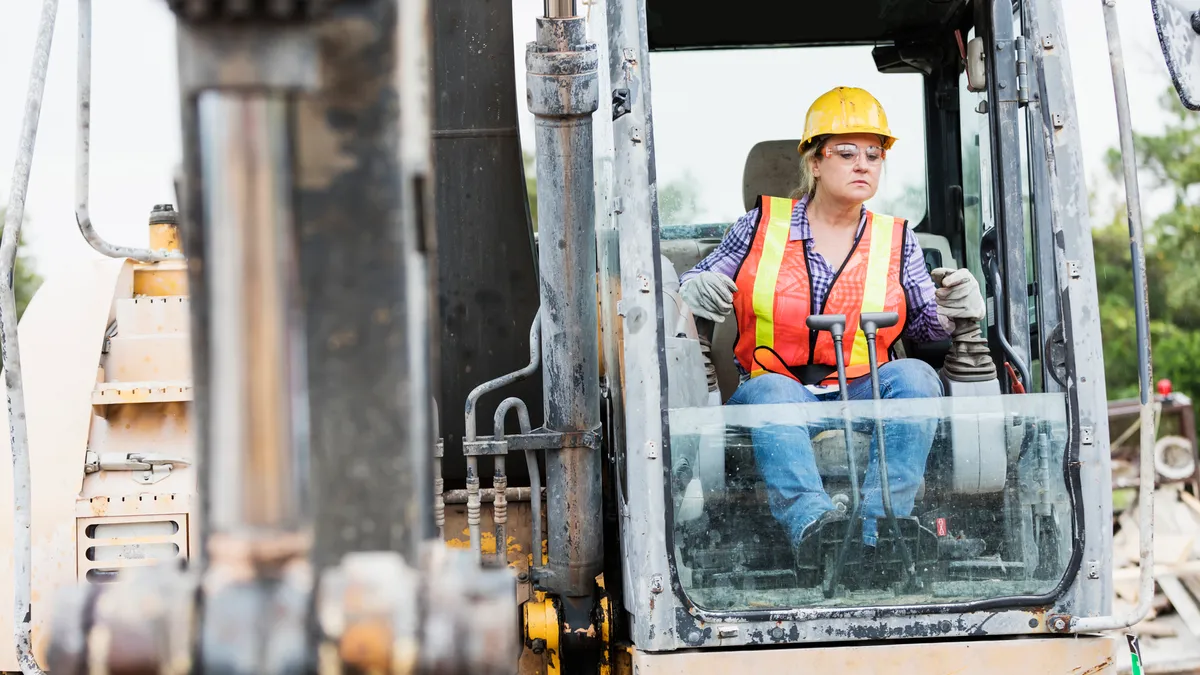Dive Brief:
- A residential building group has released a list of ideas for combating construction's long-running labor shortage, including hiring more women, providing more education and training for minority groups and changing perceptions of careers in construction.
- Ed Brady, CEO of the Home Builders Institute, a Washington, D.C.-based construction training nonprofit, attributes the shortage to a "long-term structural crisis" within the building industry that in some cases prevents it from doing a good job of attracting and retaining workers.
- While the average hourly earnings of construction workers are rising, according to the Bureau of Labor Statistics, Brady said that higher compensation is not the only thing potential workers are looking for in a career. "Beyond better paychecks, people are looking for the best overall workplace environment when they choose what careers to pursue," he said. "Today's workers want greater respect, stability and opportunity."
Dive Insight:
Demand for residential construction workers has outpaced supply for years. Open construction positions rose to 410,000 in October 2021, according to NAHB data, up from 253,000 one year earlier. At the same time, the construction employment base remained relatively flat with 7.5 million jobs in November, up from 7.4 million in January.
HBI's Construction Labor Market Report, which is based on data and research from the NAHB, estimates the residential construction industry will need to train and place 2.2 million new workers over the next three years in order to meet the present demand for new housing in the United States.
Within the last few months, the omicron variant surge has placed another layer of pressure on an employment base already stretched thin. At the same time, federal vaccine mandates and their associated legal challenges have clashed against a workforce with a lower vaccination rate than other industries.
In a press conference held at last week's International Builders Show in Orlando, Florida, Brady laid out five key hiring and training strategies for the home building industry:
- Recruit more women.
- Train and place more minority, lower-income and second-chance workers.
- Provide education and training for veterans and transitioning military.
- Develop national immigration policies that support workforce growth.
- Change entrenched and misguided perceptions of careers in construction.
HBI, which operates and licenses more than 500 trade skill training programs across 47 states, has committed to expand its operations in order to meet the industry's need for construction skills training and labor, with a focus on women, minorities, and high school students. New locations for the organization's construction academies are set to open this year in New Orleans; Houston; Phoenix; Sacramento, California; and Charlotte, North Carolina.
Opportunities in construction
A study released this week by another residential building organization shows the reasons why tradesworkers stay on the job, and what makes them want to leave. Washington, D.C.-based Building Talent Foundation found there are several things employers can do to make construction jobs more attractive.
The top reason survey respondents gave for staying in their jobs was that they had opportunities for career advancement, training and learning new skills. The next most cited reason was their boss treating them well and feeling valued and respected at work.
On the other hand, a lack of career advancement, training and development was the top reason people wanted to leave their job. Study authors said the data shows that while compensation is important, it is not the most important factor in employee engagement.
"This survey is a strong warning signal and an opportunity for employers to make sure their people see a clear future for themselves and are well-led," said researcher William Scott-Jackson, chairman of the Oxford Centre for Employee Engagement in the United Kingdom










